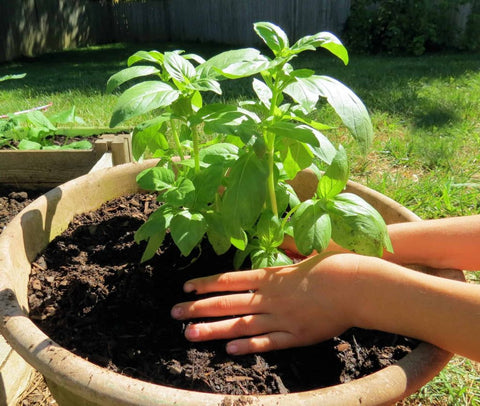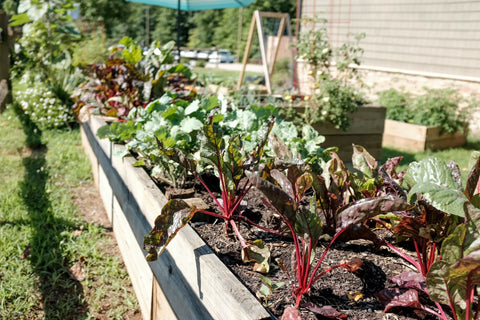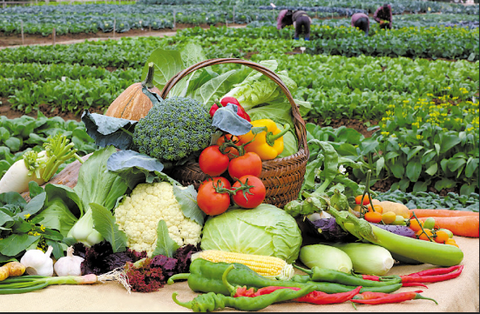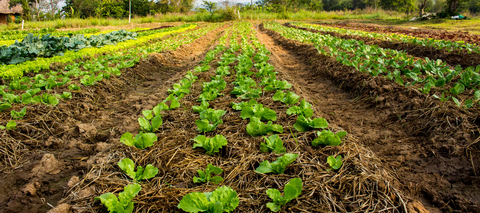Gardening is a labor of love, and one of the joys that come with it is harvesting fresh produce. However, the bounty of your garden need not be limited to a single harvest per season. Succession planting in raised beds is a gardening technique that allows you to extend your harvest window and enjoy a continuous supply of fresh vegetables, herbs, and flowers throughout the growing season. In this comprehensive guide, we'll explore the art and science of succession planting, its benefits, and how you can apply it to your fall garden for a bountiful autumn harvest.

Understanding Succession Planting
What is Succession Planting?
Succession planting is a gardening technique that involves planting crops in a staggered or sequential manner to ensure a continuous supply of fresh produce throughout the growing season. Instead of planting all your crops at once, you strategically plan multiple planting dates, allowing for successive harvests.
The Benefits of Succession Planting
- Extended Harvest Window: Succession planting ensures that you don't have a surplus of a single crop all at once. Instead, you enjoy a steady supply over an extended period.
- Maximized Space: Raised beds are often limited in size, and succession planting makes the most of your available space.
- Crop Rotation: It helps prevent soil depletion and minimizes the risk of pests and diseases that target specific crops.
- Reduced Food Waste: By harvesting as needed, you reduce the likelihood of produce going to waste.
Preparing Your Raised Beds for Succession Planting
Soil Preparation
Healthy soil is the foundation of successful succession planting. It's essential to amend your soil with organic matter, maintain proper pH levels, and ensure good drainage. Raised beds often have excellent soil quality, making them ideal for this technique.
Timing and Scheduling
Timing is crucial in succession planting. You need to know your local climate, the average frost dates, and the growth rates of the crops you plan to plant. Create a planting schedule to ensure you don't miss the optimal planting windows.

Selecting Suitable Crops for Succession Planting
Cool-Season vs. Warm-Season Crops
Succession planting works best when you understand the difference between cool-season and warm-season crops. Cool-season crops thrive in cooler temperatures, making them suitable for early spring and late fall planting. Warm-season crops prefer higher temperatures and should be planted during the summer.
Complementary Crop Pairings
Pairing crops with different growth rates and space requirements in the same bed can optimize your yields. For example, you can plant fast-growing radishes alongside slow-growing carrots. The radishes will be harvested before the carrots need the space.
Planning for a Continuous Harvest
Determining Planting Intervals
Planting intervals depend on the specific crop and your local climate. Some crops may require replanting every few weeks, while others can be staggered with a longer gap between plantings.
Overlapping Planting and Harvesting
By overlapping your planting and harvesting schedules, you ensure a constant stream of fresh produce. As one crop reaches maturity, the next batch is already growing.
Succession Planting Techniques for Fall Gardens
Extending the Growing Season
Fall gardens can benefit immensely from succession planting. Extend your growing season by planting cold-tolerant crops and utilizing season-extending techniques like row covers or cold frames
Cold Tolerant Crops for Fall
Consider planting cold-tolerant crops such as kale, spinach, lettuce, Brussels sprouts, and broccoli for your fall succession planting. These crops can withstand lower temperatures and even improve in flavor after a light frost.

Managing Pest and Disease in Succession Planting
Crop Rotation
Rotate your crops to different areas of your raised beds to prevent the buildup of pests and diseases. Changing the location of specific crops each season disrupts the life cycles of garden pests.
Soil Health Maintenance
Maintain soil health by adding compost and organic matter between plantings. Healthy soil is less susceptible to diseases and encourages beneficial soil organisms.
Harvesting and Preserving Your Continuous Bounty
Harvesting Tips
Harvesting at the right time ensures the best flavor and quality. Be mindful of each crop's optimal harvest window and harvesting techniques to minimize damage to plants.
Preserving and Storing Surplus
When you have more produce than you can use immediately, explore preservation methods like canning, freezing, or pickling to enjoy your garden's bounty throughout the year.
Elevating Your Fall Garden with Succession Planting
Crop Suggestions for Fall Succession Planting
Consider planting crops like arugula, radishes, beets, turnips, Swiss chard, and peas for your fall garden. These cool-season vegetables thrive in the cooler temperatures of autumn.
Companion Planting in Fall
Implement companion planting to naturally deter pests and promote healthy growth. For example, planting garlic alongside your other crops can help repel aphids and other pests.

Challenges and Solutions
Weather Variability
Unpredictable weather patterns can pose challenges to succession planting. Be prepared to protect your crops from unexpected frosts or excessive heat using appropriate coverings.
Maintaining Soil Fertility
Succession planting can deplete soil nutrients more rapidly. Maintain soil fertility by regularly adding compost and using organic fertilizers.
The Joy of Continuous Harvesting
Enjoying Fresh Produce Year-Round
Succession planting allows you to enjoy the taste of fresh, homegrown produce for an extended period, even into the colder months.
Reducing Food Waste
By harvesting only what you need when you need it, you reduce the risk of excess produce going to waste.
Conclusion: Savoring the Fruits of Succession Planting
Succession planting in raised beds is a gardening technique that not only maximizes your garden's productivity but also allows you to savor the joy of continuous harvesting. Whether you're a seasoned gardener or just starting, embracing this approach can elevate your gardening experience, reduce food waste, and provide a more diverse and flavorful array of homegrown produce throughout the growing season. So, get ready to roll up your sleeves, prepare your raised beds, and embark on a journey of bountiful and continuous harvests in your fall garden.









